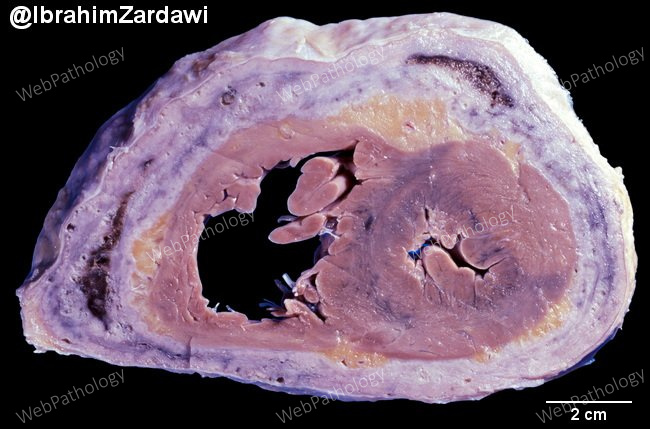Constrictive Pericarditis


Comments:
Introduction: Constrictive pericarditis refers to the replacement of normal thin, elastic, compliant pericardium by a thick, fibrotic, often calcified, non-compliant pericardium. Causes: In the developing and underdeveloped countries, the major cause is tuberculosis, accounting for 50% of cases. In the developed countries, the most common causes are cardiac surgery, viral pericarditis, mediastinal radiation, and idiopathic. Less frequent causes include: trauma, malignancies, and connective tissue diseases.Pathology: The inciting agent causes acute fibrinous or serofibrinous pericarditis which heals by formation of granulation tissue that contracts over time. There is non-specific inflammation, fibrin deposition with organization, fibrosis and calcification with obliteration of the pericardial cavity. The heart is encased with a thick, non-compliant pericardium (as seen in this image) which interferes with ventricular function. Treatment: The only definitive treatment option for chronic constrictive pericarditis is pericardiectomy. Both visceral and parietal pericardium are removed. Image courtesy of: Dr. Ibrahim Zardawi; used with permission.


